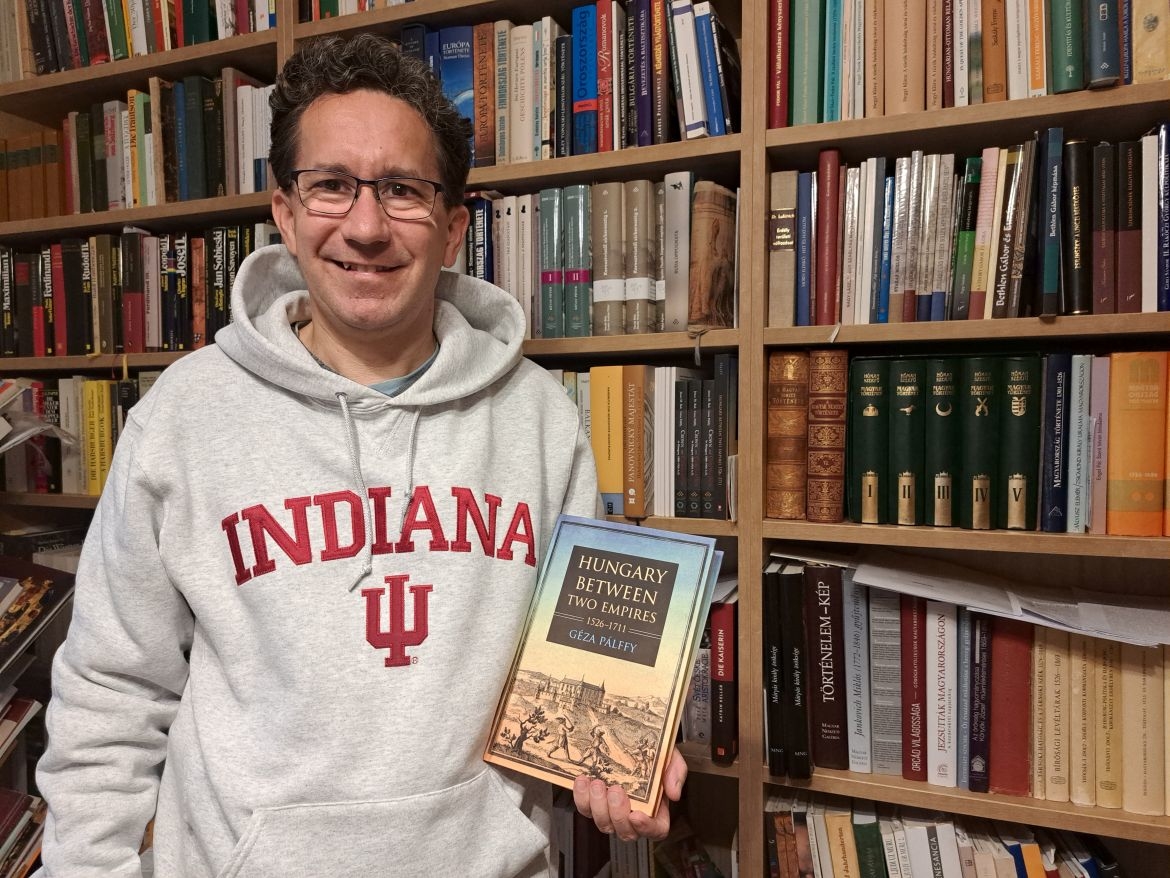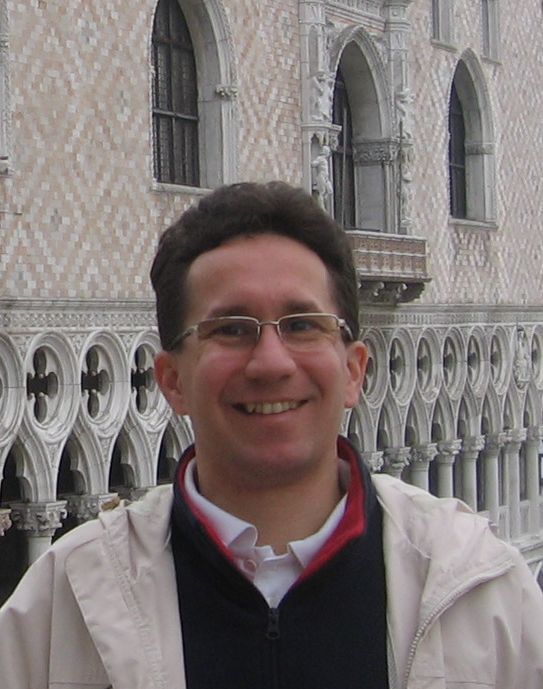On September 20th and 21st, IU hosted the eminent Hungarian historian Géza Pálffy for a series of talks celebrating the publication of his new book, Hungary between Two Empires: 1526-1711 with IU Press. Pálffy is a Research Professor in the Department of Early Modern History at the Research Center for Humanities, Institute of History at the Hungarian Academy of Sciences in Budapest.
The first talk delivered by Pálffy concerned the contents and research methodologies behind his book, Hungary between Two Empires. In fitting with the topic of the book, the talk began with detailed introductions to the subject matter from historians of the two empires discussed in the monograph. Professor Charles Ingrao, Professor Emeritus of History at Purdue University described the political history of the Hapsburg Monarchy in the era described in Hungary between Two Empires and praised this work for providing important information on the historical circumstances that led to the union of Hungary with the Hapsburgs. Next, Kaya Şahin, Associate Professor in the Department of History at Indiana University and Executive Associate Dean of the Hamilton Lugar School of Global and International Studies, provided the audience with historical context from perspective of the Ottoman Empire, as he described the motivations and challenges of the many attempts to invade Hungary by the Ottomans during this period. Finally, Pálffy himself spoke to the audience about his use of archival records and other historical sources to provide an objective historical narrative about this turbulent time in the history of Hungary. Hungary between Two Empires is one of four books in the new “Studies in Hungarian History” series from IU Press.

[Image description: Géza Pálffy presents his book at Indiana University Bloomington. Photo courtesy of Research Centre for the Humanities.]
The next day, Pálffy gave a lecture based on ongoing projects that he is working on with the “Momentum” Holy Crown Research Team at the Research Centre for the Humanities. This talk was titled “An Old Realm in a New Monarchy: Habsburg Coronations in Early Modern Hungary.” Pálffy gave the following synopsis of this research: “There were three conditions for the legitimate coronation of kings in medieval Hungary. The king should be crowned with the Holy Crown of Hungary, the ceremony should be conducted by the Archbishop of Esztergom, the head of the Catholic Church in Hungary, and finally, the ceremony should be in Székesfehérvár, in the old coronation city. Hungarian historical consciousness often extends these three conditions to all of Hungarian history, despite the fact that decisive changes in power, state and politics in the aftermath of the Battle of Mohács in 1526 brought about numerous radical twists and turns in the three basic conditions. The lecture would primarily like to draw attention to these important novelties. Thanks to new challenges, as especially the Ottoman advance and the integration of the old Realm of St Stephen into the new composite Habsburg Monarchy in Central Europe, the old traditions had been gradually combined with new methods and institutions in the ritual and organization of the coronation ceremony in the early modern Hungary.”
Thank you very much to IU Press and Dr. László Borhi from the Department of Central Eurasian Studies for hosting Géza Pálffy for these insightful lectures.


